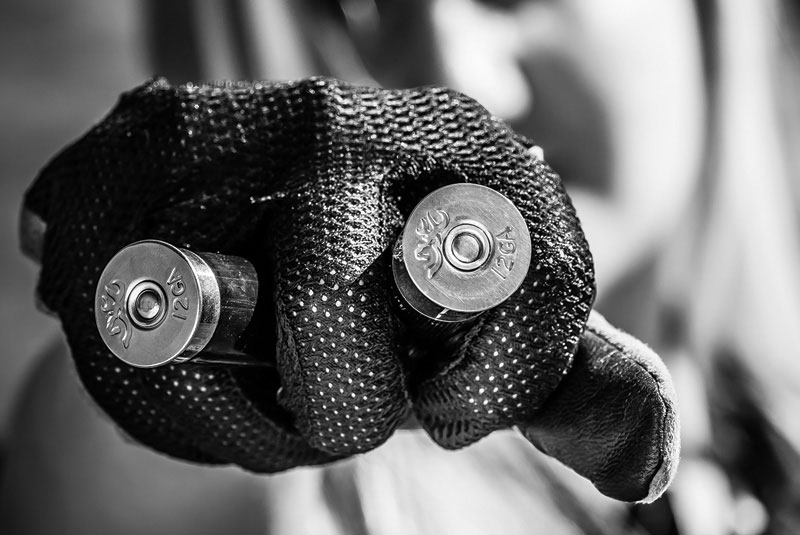Games Shotgunners Play
Shotgun target shooting is divided into “disciplines.” There are trap, skeet, and sporting clays. Among these are the variations such as trap singles, doubles, and handicap–the first involving a single clay target thrown at the shooter’s “call,” usually the word “pull.” (The origin of that word is worth noting. Shooting live pigeons goes back more than two centuries to England, and the first live-pigeon shooting club in London in 1812. This was the “Old Hats Club.” Actual old hats were placed in front of the shooter with a pigeon beneath one. The hats would be tipped over, the bird would fly, and the shooter would fire. Later, one of the Parker brothers, makers of American shotguns, developed a wooden box, or “trap,” to hold the bird, with long lines running back to an operator behind the shooting line. The call of “pull” from the shooter was the literal instruction to pull the line and release the bird. Every time a shooter calls “pull” today and fires, he is echoing the sounds you would have heard on a trap field all the way back to the early 19th century.)


Singles involves one target at a time with only one cartridge loaded–and any of Browning BPT target loads are made for the shotgun disciplines. Shooters fire from five different “stations” at 16 yards, rotating every five shots. In doubles trap, as the name implies, two targets are thrown simultaneously; and the shooter has two cartridges in his gun with which to break both. Handicap is singles trap shot at various yardages, more skilled shooters placed at longer distances than the less. Olympic trap is the same as singles but from greater distance and with the clay birds flying faster.

Skeet is shot at crossing birds thrown from a high and a low target “house,” one single from each house, then a concluding double at each station (eight stations in all), with in the American version, stations 3, 4, 5, and 8 throwing only two singles. The Olympic version is shot with the gun butt held at hip level until the bird is released, which can happen randomly within a three-second period after the call for the target. With the bird in the air, the shooter may raise the gun to his shoulder and fire. (“Skeet,” supposedly from the Norwegian “to shoot,” was the winning entry in a contest to come up with a name for the new discipline in the 1920s.)
The third, sporting clays, which over and over again is called the “golf” of shooting, is done on different layouts from range to range, all meant to simulate real field conditions as nearly as possible. So some birds–which can be in several different sizes–can be crossing, others going away, incoming, rising, tall birds, and even a running rabbit bounding along the ground. Other disciplines are 5-station, which is a kind of sporting clays in a compressed layout; and FITASC is the French/international variation on sporting.

Again, these are the disciplines, with all that word may imply. There are strict rules, based mostly on concerns for safety but others meant to enshrine the conventions of the sport. So you have handicaps, along with referees, warning cards (as in soccer), leagues, standings, even anti-doping rules. Which are all perfectly fine, even necessary. But what about fun?
When people get together to play poker, they usually start out with straight five-card draw. But there is also dealer’s choice which opens the door to stud, high-low, jacks-or-better, Anaconda, and other games. The same with clay-target shooting at the range.
Shooters are forever applying their imaginations to clay targets, making up games of their own that in time are handed around to other shooters on other ranges. A lot of these games are about eliminating the other shooters, which can quicken the pace of the shooting, while at the same time often involving more shooters at one time, making for a more inclusive game.
One of the more well-known games is “Annie Oakley” which has three shooters mount their guns at the same time. The first shooter calls for the bird; and if he misses, the second takes a shot, then the third if the target remains unbroken. If the first shooter misses and the second scores, the first is out. If first and second miss and the third breaks the bird, the first two are out. All three miss, they are all safe. If the first shooter breaks the bird and the second shooter fires anyway, the second shooter is out, etc. Needless-to-say, it makes for a lively round of shooting, with noticeable laughter and some muttered oaths.
A twist on Annie Oakley lets the second shooter try for a piece of the bird the first shooter has broken, which raises the challenge. Other games include “Slider” in which the shooter goes back one yard with every broken bird, ultimately to the 27-yard mark, and walks up two with a miss without going past the 20-yard line (for safety, shooters move clear if they get ahead of a shooter farther bark, then move back up to shoot; at the end of the agreed-to number of shots, the winner is the one who has been farthest back the longest.) If your range has a tower for tall birds, there is “Long Bird”: X number of doubles are thrown from the tower, the first on the call and the second on the “report,” the sound of the first shot; birds fly fast and sometimes goofy; high score wins.
You can find the rules for many other games online, but there is no limit to the ones or the types you can make up, safety remaining the paramount concern. Think up your own safe game and invite your friends, and especially youngsters maybe not quite ready yet for Olympic level competition.
Follow Browning Ammunition’s social media channels for more hunting and shooting tips and updates on Browning Ammunition supported events and promotions on Facebook, You Tube, Instagram and Twitter.



